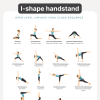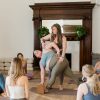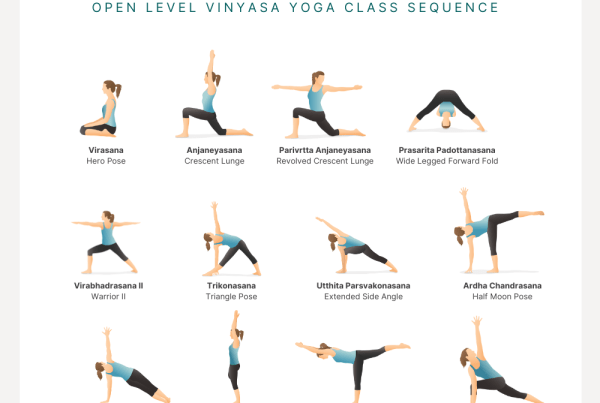
Love is a word that when you see or hear you can immediately relate to in some way. You might think about how much you “love” something, someone, or somewhere. You might think about a display of love between people, a hug or a kiss. You might think about a feeling within yourself…perhaps a warmth spreading through your body or a brightness which brings a smile to your face.
However you relate to love, one thing is for certain is that it is a transcendent feeling. It is something that has the ability to be felt and shared by all beings. Love, in its truest form, can act as a binding agent closing the gap between even the seemingly largest of enemies. When love is felt and is given room to blossom, hate and other lower frequency emotions have no room to grow.
But how can such a powerful thing be cultivated? How does one experience love? And if love is so transcendent, why is there so much hate in the world?
The ability to love another only goes as deep as the love one has of themselves.
The thing with love is that while we all have a right to love and to be loved, it does not exist outside of us waiting to be packaged and delivered to us to buy or ingest. And while companies continuously try to sell us on this idea (and we continue to buy in thinking this emotion originates from another being or entity other than ourselves), love in its purest form can only be created from within and for within. The love that makes the world go round begins with the love we have for ourselves. For when we truly fall in love with ourselves, as we are and for who we are, we have the capacity to fall in love with everything and everyone around us.
Some people may read the above paragraph and think it’s a little bit too “woo-woo,” but doesn’t that sound like a magical world to live in? One where people truly love themselves? And because of that, they love one another? I don’t know about you, but it sounds pretty magical to me. I actually think that the term “woo-woo” was created for things in this world and life experience that are in-fact wonderful and magical, but almost seem too good to be real. Therefore, people don’t want to believe they are real or achievable. I, though, fully believe in the magic and something tells me you do as well.
Why not give it a go? Why not just try to fall in love with yourself? You might just love the outcome. It does require that you open yourself and your heart up to the world and to this life. It requires trust, and it also doesn’t mean you won’t get hurt. But opening yourself up, and allowing yourself to be receptive is what is required for you to have the opportunity to not only receive love, but to share love.
Supporting Pose 1: Goddess with Groin Stretch (Utkata Konasana)

Getting into the hip groins can assist in opening up the connective tissues which run from the inner thigh/pelvis to the lower spine. It’s often we overlook stretching the inner thigh as a way of approaching backbends, which is why I’ve decided to add it into this sequence for Camel.
How to:
- Turn towards the side wall with the feet about 2-3 feet apart from one another.
- Turn the heels in and toes out to widen the inner thighs and turn the legs out at the hips.
- Bend the knees to about 90 degrees and with the knees stacked over the ankles. For less intensity, bring the feet closer together and bend the knees to a less degree.
- Take the hands to the legs and turn the torso towards the left while widening the right hip groin. Hold for 3-5 breaths and then go the other way.
Supporting Pose 2: High Lunge

High lunge is a great prep pose for Camel for a variety of reasons. Reaching the arms up encourages length along the spine and torso. You can also interlace the hands behind the lower back to mimic the actions of the arms in Camel. This particular variation with the back knee slightly bent lends a bit more access to the pelvis to lift the frontal hip point towards the belly button, aka take the pelvis towards a posterior pelvic tilt, which is helpful for our peak pose.
How to:
- From a Downward Facing Dog, step the right foot in between the hands.
- Keeping the back heel lifted, rise up so the torso is upright and the crown of the heading is aiming towards the ceiling.
- Reach the arms up alongside the ears. Imagine each rib was lifting off the lower rib. It is okay if the shoulders reach up a little bit so long as they are not scrunched up by the ears.
- Slightly bend the left knee and firm the left buttocks forward. This should encourage a lengthening of the lower spine and a slight lift of the frontal hip points. Don’t overdo this. It should not feel like you are “tucking the tail” or rounding the back. It should just be enough to note the action of the sacrum going slightly forward to prepare for a backbend.
Supporting Pose 3: Revolved Chair with Arms Spread (Parivrtta Utkatasana)
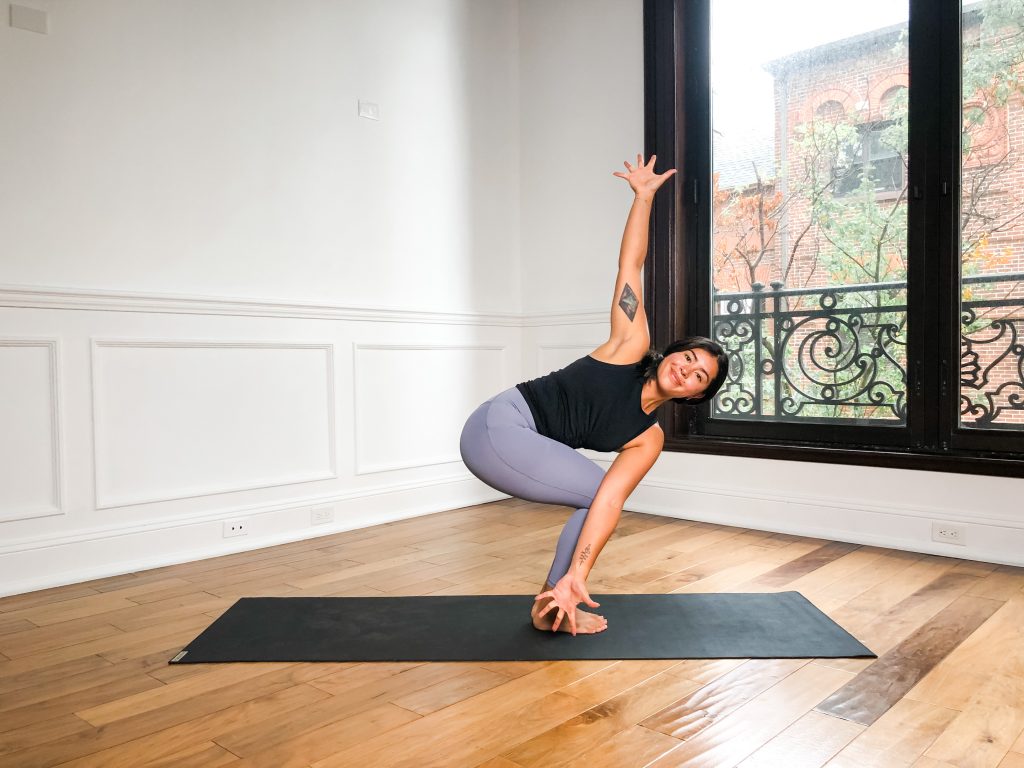
Twisting is generally a good idea to prep for backbending as it helps to invite movement into the spine and torso. I like this particular twist because it has both legs going in the same direction and bent, as we see in Camel. The arms spreading helps to teach the action of the shoulder blades moving towards one another to invite in a widening of the collarbones.
How to:
- Start in a Mountain Pose.
- Bend the knees and press the sit bones back in space to come into a chair pose.
- Turn the torso to the right and hook the left elbow to the outside of the right thigh.
- Take the shoulder blades towards one another and spread the arms so the left hand reaches towards the floor and the right hand reaches towards the ceiling.
- Reach the center of the chest and crown of the head forward.
Peak Pose: Camel (Ustrasana)
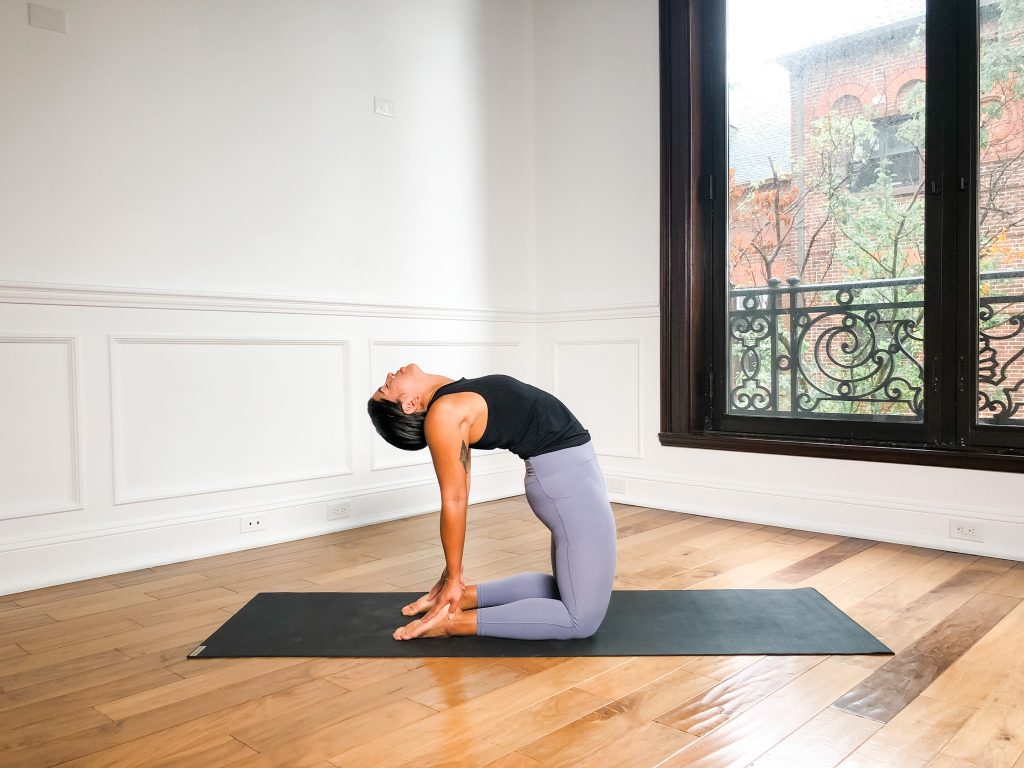
Camel is not only a heart opener, literally opening up your heart to the space around you, but it is a pose that requires conscious effort, patience, and practice. Because of the way the body is positioned in relation to the earth, it is easy for this pose to feel a little (or a lotta) uncomfortable in the lower back region. We might think we can just drop back into the pose, but this pose takes a lot of time to do with good alignment so that it actually feels good in the body.
How to:
- Come into a high kneeling position on the floor with the tops of the feet pressing down into the mat.
- Bring your hands to the sides of your pelvis with your shoulder blades coming towards one another and the collarbones spread.
- Press the pelvis forward and reach up through the spine and the sides of the body. Reach up so much that your body begins to backbend.
- Keep lifting the center of the chest forward and up and walk your hands down your legs towards your feet. You can use blocks on either side of your feet if the feet are too far away.
- Connect the palms of your hands to the soles of your feet and use that connection as an anchor to continue to backbend.
- The head can relax back if it feels okay for the neck. Breathing should feel even and steady.



